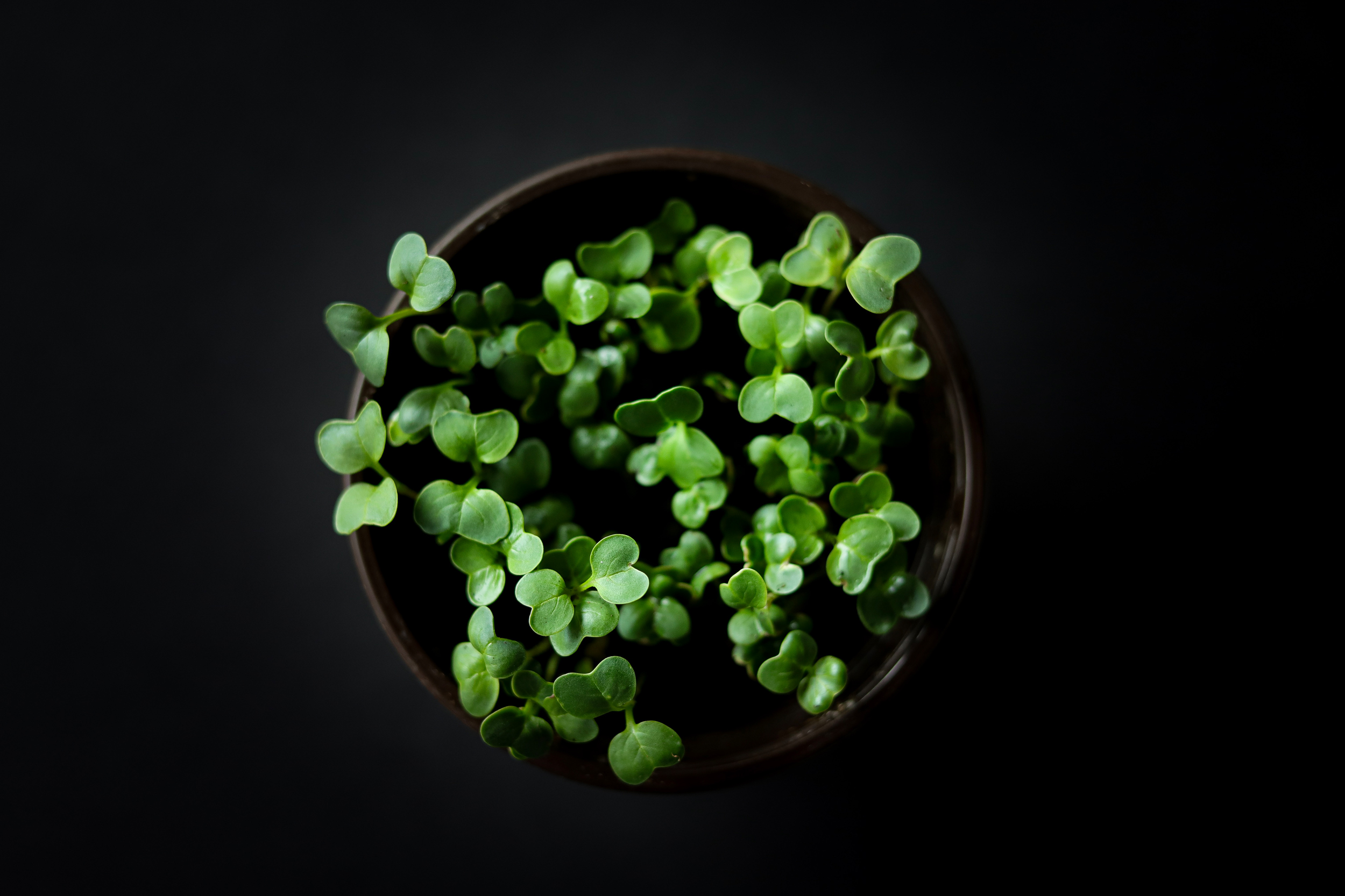Microgreens in Winter
Cozy fires and rich comfort food, warm sweaters and storm watching; these are a few of my favourite things. Unfortunately, winter’s return also means I can no longer just walk outside to pick some fresh greens for dinner. I keep some hearty herbs and veggies growing through the winter, but it’s the more delicate fresh and crunchy greens I miss the most.
Enter the simple world of microgreens. Harvesting fresh, crisp and nutrient-rich greens instead of buying boxes of wilted baby greens in the grocery store is a small victory in the cold and gray of winter. Easily grown indoors on a windowsill, these little wonders take on the concentrated flavour of whichever seeds you plant in this delicate, miniature form: super carroty-flavoured greens, extra sweet and tender pea shoots or the piquant essence of spicy radish.
Microgreens are generally more nutrient-dense than the equal quantity of their mature vegetable counterparts, and they come in a rainbow of colors, making them as gorgeous as they are healthy. Perfect for making juice and morning smoothies (think wheatgrass), or putting in salads, soups, stir fry, pesto and sandwiches—these little seedlings are kept alive until you are ready to use them, maintaining peak freshness and vitamins.
 How to Grow Microgreens
How to Grow Microgreens
Growing your own microgreens is a simple process. Start by choosing a sunny, south-facing window or get a small grow light, which you can purchase at any good local gardening shop. Then find a container with drainage holes (a plastic salad clamshell container or your favorite plant pot) and either fill with approximately two inches of sterilized soil or insert a soil mat.
Next comes the fun part, where you get to choose your favorite vegetable, grain, herb or edible flower seeds (preferably organic as these will be eaten soon after sprouting). Some of my favorites are sunflowers and peas for their speed, size and mild sweet flavour; chard and beets for their beautiful color; and radish, cress, basil and mustard greens for their big bursts of flavour. Densely sprinkle the seeds over the soil and then gently water them. Refer to your seed packet to find the recommended amount of soil cover and slightly cover the container with plastic wrap or a lid.
Keep the seeds moist by misting them daily with a spray bottle, and uncover the soil once seedlings start to emerge. Seeds are officially considered microgreens once they have their first true pair of leaves, and they can be harvested at any time after that. If you leave them longer, they will simply grow into baby greens. To harvest, cut the microgreens above the soil level or pull them out, including their roots. It is important to gently wash your greens thoroughly before eating, especially if including the roots.
This is low-commitment, high-reward gardening, so grab your kids and grow some fresh greens!






